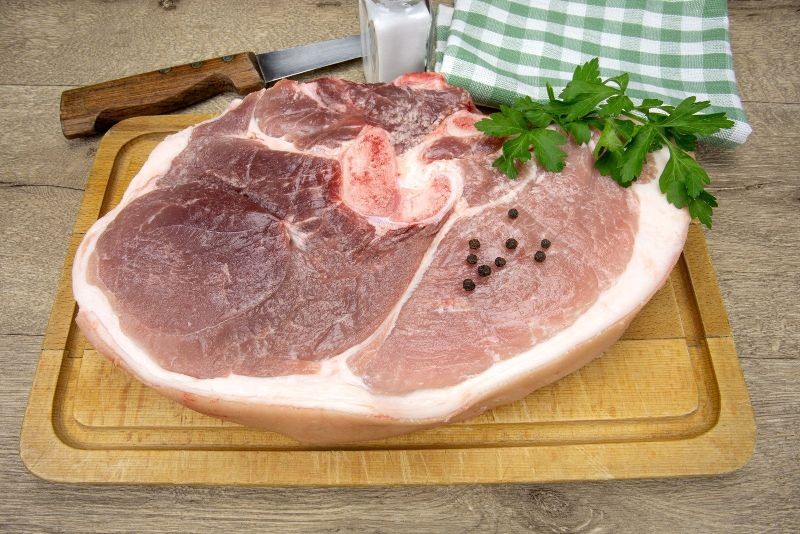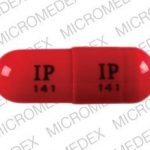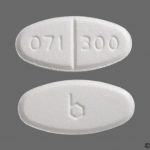
Contents
Is Pork Bad for You, and Is It Worse Than Beef?
Pork is a versatile and flavorful meat that can be grilled, roasted, fried, or braised. It has lower levels of fat and cholesterol than beef but fewer minerals and vitamins.
Pork is pig meat. It can be grilled, roasted, fried, or braised. It is processed to make sausages, ham, bacon, and pulled pork. But is pork bad for you?
Here’s everything you need to know about the risks of eating pork and whether beef is better.
Like most foods, pork can be part of a balanced diet. However, you must consume it in moderation and cook it healthily. Pork is red meat that is rich in proteins, vitamins, and minerals, but it is also high in fat and cholesterol.
In particular, some pork cuts are high in saturated fatty acids, so-called bad fats. Excess saturated fats can increase your risk of heart problems, obesity, and other long-term illnesses. Undercooked pork also carries the risk of viral and bacterial infections that pass on from pigs to humans.
Here are some specific risks of eating pork:
Pork may carry the zoonotic hepatitis E virus, which can transmit from pigs to humans. Hepatitis E is a disease that causes inflammation and swelling in the liver. The genotype-3 hepatitis E virus is found in pigs, especially in their livers. Research shows that the virus can also be found in the kidneys and hearts of infected pigs.
Generally, pork muscle meat from the loin or tenderloin is safer to eat than the organs, but all pork should be thoroughly cooked. Eating raw or undercooked pork can increase your chances of becoming infected by hepatitis E.
Liver problems
Excessive consumption of certain substances can cause liver problems, like fatty liver disease, cirrhosis, and liver cancer. Research shows that pork consumption, like alcohol abuse, can increase the risk of liver problems.
Pork contains high amounts of saturated fat and omega-6 fatty acids like linoleic acid. These fats can worsen the effects of alcohol abuse and cause fatty liver disease. It can worsen liver health and lead to cirrhosis. The exact way pork affects the liver is still unclear and requires more research.
Multiple sclerosis is a long-term (chronic) neurological condition that affects the brain and spinal cord. It is unknown what causes it, but evidence suggests that pork consumption and fat intake can be associated with multiple sclerosis. Some research indicates that increased fat and pork intake may triple the risk of multiple sclerosis.
Yersiniosis
Yersinia enterocolitica is a type of harmful bacteria found in pigs. Handling or eating raw or undercooked pork contaminated with Yersinia can cause a zoonotic infection called yersiniosis. This illness affects your gut and can cause symptoms like abdominal pain, diarrhea, fever, and vomiting.
Yersiniosis can seriously affect children, older people, and those with a weakened immune system. It can lead to complications like blood poisoning due to bacterial growth (septicemia) and inflammatory conditions like reactive arthritis and erythema nodosum.
Parasites
If pork is not handled or cooked properly, it can be a source of parasitic infections. Intestinal parasites like tapeworms can live in the gut of pigs. They are transmitted to humans through undercooked pork. A tapeworm infection (taeniasis) can cause diarrhea, weight loss, abdominal pain, and malnutrition. Sometimes, it can also cause cysticercosis, which may lead to seizures/epilepsy and muscle and eye damage.
Eating raw or undercooked pork can also cause trichinosis, an infection caused by parasitic roundworms. Trichinosis symptoms are generally mild, but they can become serious in the cases of older people. To reduce the risk of such parasitic infections, you should handle, store, and cook pork properly.
Chronic illnesses
A recent study revealed that eating red meat like pork makes gut bacteria produce the chemical trimethylamine N-oxide (TMAO) during digestion. Gut bacteria produce TMAO to digest red meat containing high levels of a chemical called L-carnitine.
Unfortunately, high TMAO levels in the blood can lead to inflammation and high blood sugar levels. Along with heart problems, TMAO may increase the risk of chronic kidney disease and type 2 diabetes. However, more research is required to properly understand the effects of TMAO in humans.
Is pork worse than beef?
Both pork and beef are high in proteins, fats, vitamins, and minerals. However, beef tends to have more calories, saturated fat, and cholesterol than pork. Pork may be a better choice if you’re trying to manage your blood cholesterol levels. At the same time, beef has higher levels of minerals like zinc, calcium, and iron and certain vitamins like vitamin B12 and vitamin K, so it can be a healthier choice in some cases.
The fat content of either beef or pork also depends on the cut of meat. Lean cuts of beef like sirloin are lower in fat and cholesterol than certain pork cuts, such as spare ribs.
Additionally, how you cook pork and beef affects their nutritional value. Cooking methods that require additional fat, such as grilling or frying with oil, butter, or lard, can increase the saturated fat and calorie content of beef or pork.
Beef vs. pork
A 3.5-ounce (100-gram) serving of raw, ground lean beef contains the following nutrients:
- 254 calories
- 17.2 grams of proteins
- 20 grams of fat
- 18 milligrams of calcium
- 1.94 milligrams of iron
- 17 milligrams of magnesium
- 158 milligrams of phosphorus
- 270 milligrams of potassium
- 66 milligrams of sodium
- 4.18 milligrams of zinc
- 71 milligrams of cholesterol
Beef also contains minerals like copper, manganese, and selenium. It is rich in vitamin A, thiamine, riboflavin, niacin, pantothenic acid, vitamin B6, folate, vitamin B12, vitamin D, vitamin E, and vitamin K.
The same amount of raw, boneless, top loin pork contains these nutrients:
- 166 calories
- 21.3 grams of proteins
- 8.3 grams of fat
- 7 milligrams of calcium
- 0.53 milligrams of iron
- 24 milligrams of magnesium
- 216 milligrams of phosphorus
- 358 milligrams of potassium
- 47 milligrams of sodium
- 1.73 milligrams of zinc
- 64 milligrams of cholesterol
Pork also contains vitamin A, thiamine, riboflavin, niacin, pantothenic acid, vitamin B6, vitamin D, and vitamin E.
What research says
Pork has lower levels of fat and cholesterol than beef but fewer minerals and vitamins. Additionally, recent research shows that lean pork and beef consumption for three months had a similar effect on weight and fat levels in people with obesity. Pork and beef diets resulted in similar energy and nutrient intakes overall.
Generally, it’s best to consume pork and beef in moderation to avoid risks.
QUESTION
How to prevent the risks of eating pork
To reduce the risks of eating pork, limit your portion size and choose lean cuts of pork, such as the loin or tenderloin. Trim off visible pork fat before cooking to reduce your saturated fat intake. Instead of consistently eating pork, include other protein sources like nuts, legumes, chicken, and seafood in your diet.
Also, handle pork with care and cook it thoroughly to prevent infection. Wash your hands and surfaces that came into contact with raw pork. Keep raw pork away from other foods to avoid cross-contamination.
Cook pork to an internal temperature of at least 145 degrees Fahrenheit or 63 degrees Celsius to kill harmful bacteria and parasites. Finally, properly heat pork and eat any leftovers quickly to help prevent microbial growth.
Acta Veterinaria Scandinavica: "Prevalence of human pathogenic Yersinia enterocolitica in Swedish pig farms."
American Heart Association: "Increased heart disease risk from red meat may stem from gut microbe response to digestion."
CDC: "Questions and Answers," "Taeniasis FAQs," "Trichinellosis."
FoodSafety.gov: "Cook to a Safe Minimum Internal Temperature."
Frontiers in Microbiology: "Occurrence of Hepatitis E Virus in Pigs and Pork Cuts and Organs at the Time of Slaughter, Spain, 2017."
International European Conference on Interdisciplinary Scientific Researches: "Impact of Pork Consumption on Human Health."
International Journal of Environmental Research and Public Health: "Relationship between Dietary Beef, Fat, and Pork and Alcoholic Cirrhosis."
Medical Hypotheses: "Multiple sclerosis, latitude and dietary fat: is pork the missing link?"
Nutrients: "A Comparison of Regular Consumption of Fresh Lean Pork, Beef and Chicken on Body Composition: A Randomized Cross-Over Trial."
USDA: "Beef, ground, 80% lean meat / 20% fat, raw," "Pork, fresh, loin, top loin (roasts), boneless, separable lean and fat, raw," "USDA Nutrient Data Set for Fresh Pork (From SR), Release 2.0," "USDA Nutrient Data Set for Retail Beef Cuts from SR, Release 3.0."
USDA: "Beef, ground, 80% lean meat / 20% fat, raw," "Pork, fresh, loin, top loin (roasts), boneless, separable lean and fat, raw," "USDA Nutrient Data Set for Fresh Pork (From SR), Release 2.0," "USDA Nutrient Data Set for Retail Beef Cuts from SR, Release 3.0."


